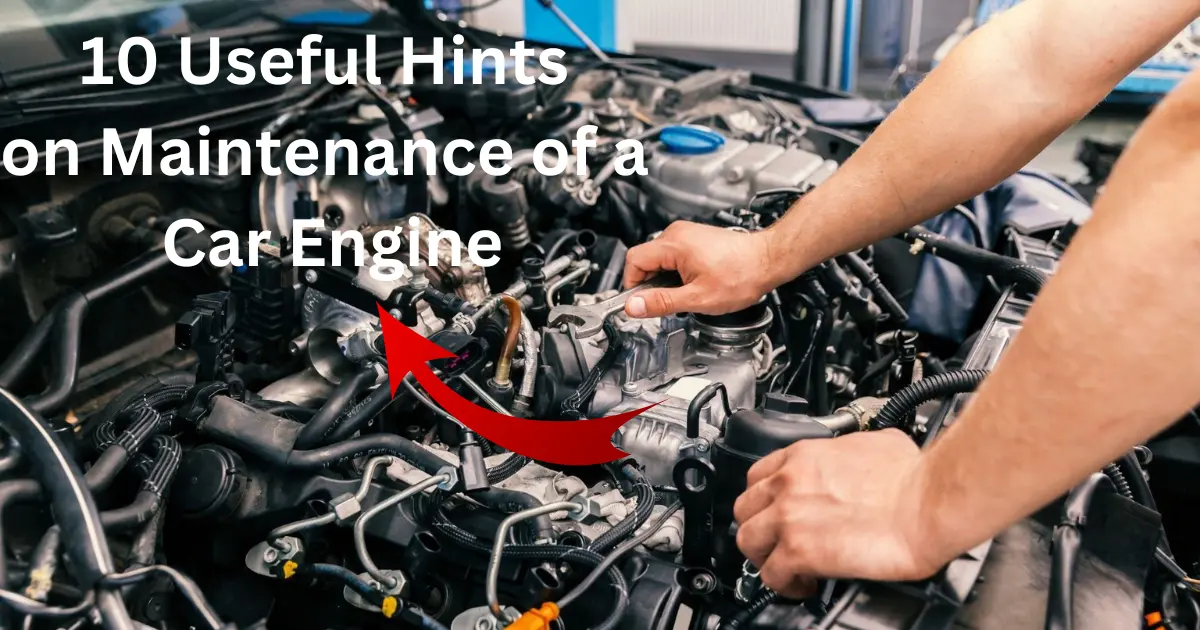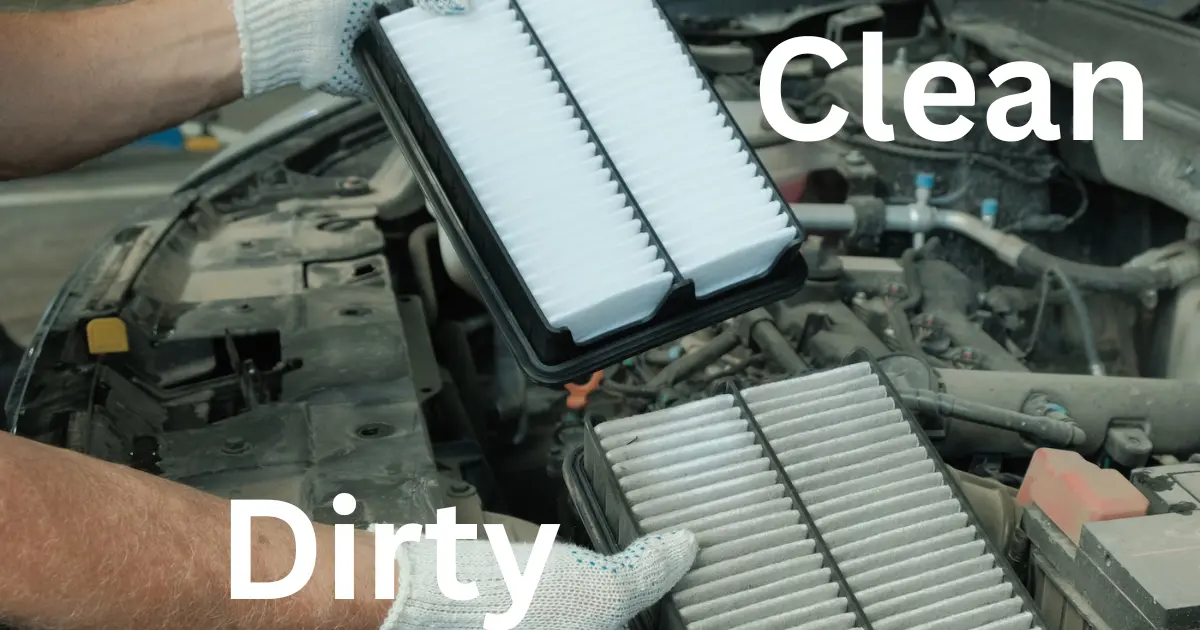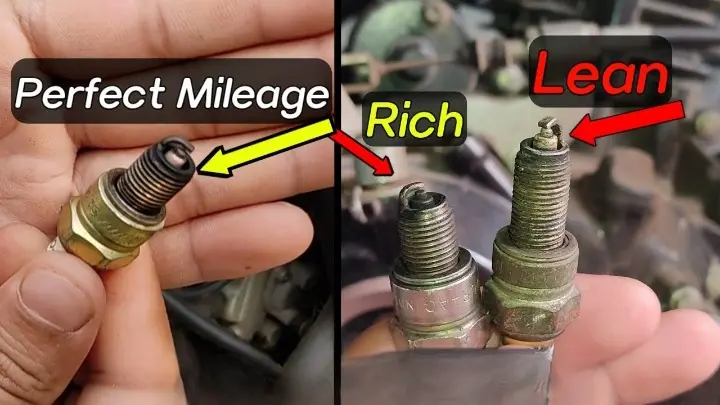A car engine is the most important component. This engine drives the whole vehicle forward and backward. So, maintaining the engine is the most important factor. In this article, I will discuss the 10 useful hints on maintenance of a car engine.
Maintenance of the Car Engine
The engine is the power-generating motor in a vehicle. There are a lot of components that work together in an engine to generate power. In an Internal Combustion Engine(IC Engine) the air and fuel burn and produce power, and the temperature inside the cylinder is too high.
A lot of factors affect the power generation of the engine. Components like pistons, crankshafts, camshafts, fuel injector nozzles, valves, lubrication oil, etc. The RPM of an engine is near about 1000 to produce a single power. So, the speed of working of every part is too fast.
To maintain the speed and the running condition of the parts every part needs to be lubricated well and need to be timed well. So read the 10 useful hints on the maintenance of the car engine.
10 Useful Hints on Maintenance of a Car Engine
The exhaust gases in a petrol engine contain carbon monoxide, some burnt hydrocarbons, and oxides besides other harmful substances in negligible quantities. It is, therefore, obvious that unless the engine is maintained in good condition always, the exhaust gases are likely to contain higher parts of pollutants.
To keep and maintain the engine in condition, the following should be checked regularly at stipulated intervals.
1. Cylinder Pressure or Compression
The cylinder pressure or compression should be maintained at the prescribed level. Otherwise, the engine can not run effectively and deliver the desired power. The pollutant level in the exhaust gases can never be kept at prescribed levels. Compression in the cylinders can easily be checked with a compression gauge.
In a premium car, depending on the compression ratio carrying from 8.3:1 to 8:1, the compression pressure should normally be 100-110 N/cm.
Should it fall below 65-75 N/cm depending on the compression ratio of the engine, it indicates the necessity for an overhaul of the engine. Between the cylinders, a difference of more than 7 N/cm also warrants an overhaul of the engine. However, while the compression pressure is at the lower levels as above, the level of pollutants in the exhaust gases will be higher due to incomplete combustion.
The inlet valves in the engine permit air petrol mixture inside the cylinders and the exhaust valves allow the burnt gases to go out of the cylinders. Proper valve clearance must be maintained. It is 0.25 mm for the inlet as well as exhaust valves at operating temperature of the engine(80- 850C).
2. Crankcase Ventilation
All manufacturers provide engine crankcase ventilation as well as absorption of oil fumes by the air cleaner to be drawn into the engine along with the air-fuel mixture. The pipes, passages, and filler caps provided with breather passages or holes should be kept clean.
3. Air Cleaner
The car may have a dry dry paper filter type of an air cleaner or an oil bath air air filter. The air cleaner cleans the air going to the engine, silences the noise while the air is drawn into the engine, and is also a flame arrester when the engine backfires through the carburetor.
A choked dry paper air cleaner or an oil bath air cleaner with insufficient oil or an unclean one will result in the engine running on a rich mixture resulting in higher pollutant levels in exhaust gases.
So, it is necessary to have an air cleaner and maintain it a good condition. Change the dry filter element every clean and refill every 1500 km.
4. Lubricating Oil
Lubrication oil is the greasing member of the engine parts. The power generated by the engine gained a lot of temperature. The revolution of the engine parts is at high speed, and the frustration can happen or the friction can increase if the engine oil is not enough, or the property is not good for the engine condition.
Lubricating oil does not only decrease the friction it also helps to cool down the engine parts. In an air-cooled engine, the air is the main media of the cooling system, but the lubricating oil also helps to swipe the engine heat into the crankcase.
So, the engine oil property must be within the specific limit. Also, depending on the geographical location the oil property should be changed. The altitude of a place can also change the property of the lubricating oil. Checking the level of the lubricating oil is also a good practice.
5. Fuel Pump
The fuel pump should be serviced at prescribed intervals, say once in 3 months. Suppose the fuel pump discharge pressure is in excess. In that case, it might either flood the carburetor and increase the fuel consumption even without flooding and result in a rich mixture being fed to the engine which will increase the level of pollutants in the exhaust gases.
6. Pollution from the Fuel Tank
Never fill the tank to the brim and always keep the level of fuel above half the capacity of the tank to reduce evaporation loss and thus pollution also. For that reason, the charcoal canister is used to rectify the evaporation gas and use it in the combustion chamber.
7. Ignition System
The ignition system in an engine also contributes liberally to the upkeep of the engine and its efficiency. The contact breaker points should be clean and free from the pitting or uneven surfaces and the gap should be maintained between 0.27-0.38 mm in a premium car and 0.38 mm in a simple car.
The spark plug used should be in the proper heat range recommended by the manufacturer and must be kept clean every 5000 km with a gap of 0.6 mm in almost all vehicles. Care should be taken to ensure that the low or high-tension circuit in the ignition system does not leak or short circuit.
8. Exhaust System
The exhaust system consists of the exhaust manifold, exhaust pipe, silencer, and tailpipe. A choked silencer will create back pressure on the engine and exhaust valves. Due to this, the engine will have to work extra to deliver the power it normally expects to deliver.
This will result in more fuel burnt resulting in more pollutants in exhaust gases. This could be detected when the engine vibrates at cruising speeds.
9. Running Temperature
The running temperature of the engine in all makes of cars should be between 750 and 900C. There are many factors other than the power unit which indirectly may cause more fuel to be used than necessary. They are slipping clutch, dragging brakes, worn tires, tight wheel bearings, improper wheel alignment, speed over 50-60kmph, and overloading.
10. Checking Spark Plugs
Spark plugs are used in petrol cars but in diesel engines, there is no need for the spark plugs. These plugs are important as they deliver the electric power generated spark on the fresh charge. So the timing of the spark plug and the property of the plug are very important for the combustion.
Conclusion
The maintenance of the car engine is the best practice as it can help you from bigger issues. The engine is the most important component and operates a high pressure and high temperature. Also, the helping parts of the engine as the fuel injection system, lubrication system, and braking system need to be checked for the optimal performance of the engine.



